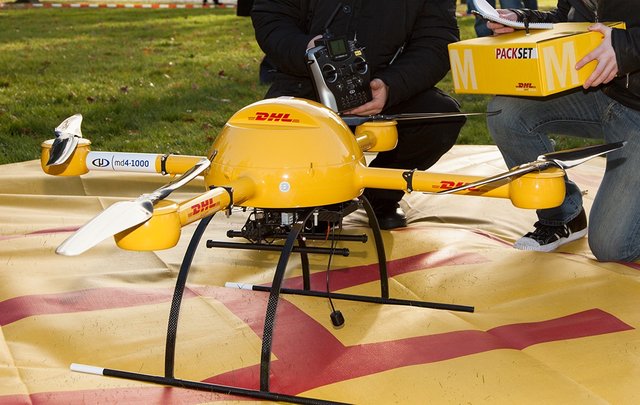Drone Delivery Future
There are many jobs at risk of being replaced by artificial intelligence, but some people working in roles requiring physical activity and performance believe they are currently irreplaceable. However, did you know that even delivery workers might be replaced in the future? Surprisingly, this replacement might not come directly from AI but from drones.
Major delivery companies like DHL have already begun using drones for deliveries. This concept isn’t entirely new; during the COVID-19 pandemic, multiple companies utilized drones to deliver medical supplies to patients. Drones proved to be faster and more efficient in places like Ghana, Uruguay, Canada, the USA, and Australia. Food delivery has also embraced drones, with Foodpanda in Singapore leading the way. They found that drone delivery ensured meals arrived hot and fresh, unaffected by traffic congestion or other delays. Drones have also been used to deliver mail in countries like Singapore, Germany, and Switzerland. Royal Mail in England has implemented drone deliveries extensively. Beyond these, drones have been employed to transport general orders, military equipment, and even in agricultural activities.
However, despite their advantages, drones face several challenges preventing their widespread daily use:
Battery Life: The flight time of drones is currently limited due to battery technology. While nuclear or solar-powered options might extend this, they would make each drone prohibitively expensive, which is impractical.
Electronic Interference: While there is no congestion in the skies, intentional electronic interference, such as hacking, or unintentional disruptions, like electromagnetic fields, can cause accidents or divert drones from their intended paths, posing safety risks.
Weather Conditions: Although drones are being designed to withstand harsh weather, severe conditions like strong winds or heavy rain can still hinder their ability to collect data, navigate precisely, or maintain flight.
Privacy Concerns: If every store or restaurant operated drones, they could potentially be misused for spying or other unethical purposes. Addressing such issues requires robust control and monitoring systems.
Collisions with Birds and Environmental Impact: Incidents of drones colliding with birds have been reported, leading to either drone malfunctions or harm to wildlife — both undesirable outcomes.
Suitability of Delivery Locations: Drones cannot simply drop packages at every doorstep. In some areas, this might lead to theft or loss. To prevent such incidents, drones would need advanced features like facial recognition or identity verification systems, which would significantly increase costs.
Despite these challenges, the future might see drones becoming a routine part of our lives, handling deliveries and other tasks. But when will this happen? The timeline remains uncertain. With the advancement of AI, drones could be developed to act autonomously and intelligently in scenarios like losing connection, enabling them to return safely to their base or adapt to unexpected situations.
What do you think? Would you like to own a personal drone? What would you use it for, and how likely is this to become a reality in your country? Imagine ordering food from a restaurant and having it delivered by a drone — what would your reaction be? Do you believe this method is practical or an inefficient use of energy? Keep in mind that drones’ delivery times and shipping costs are often lower than those of human workers, and their operational expenses could be comparable depending on the drone’s type.
